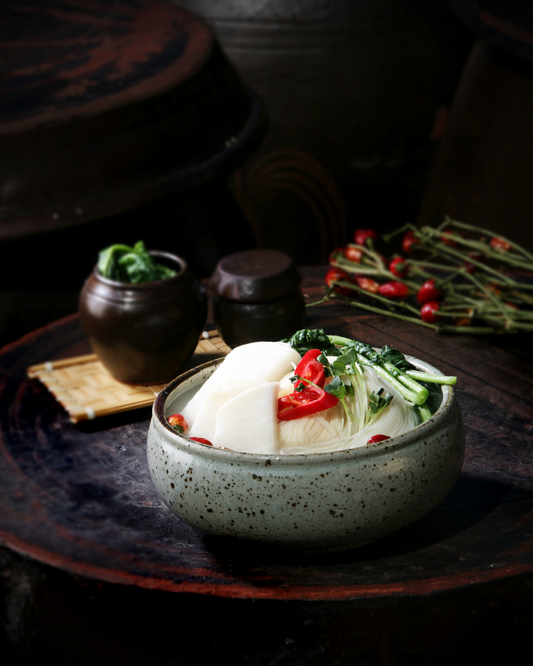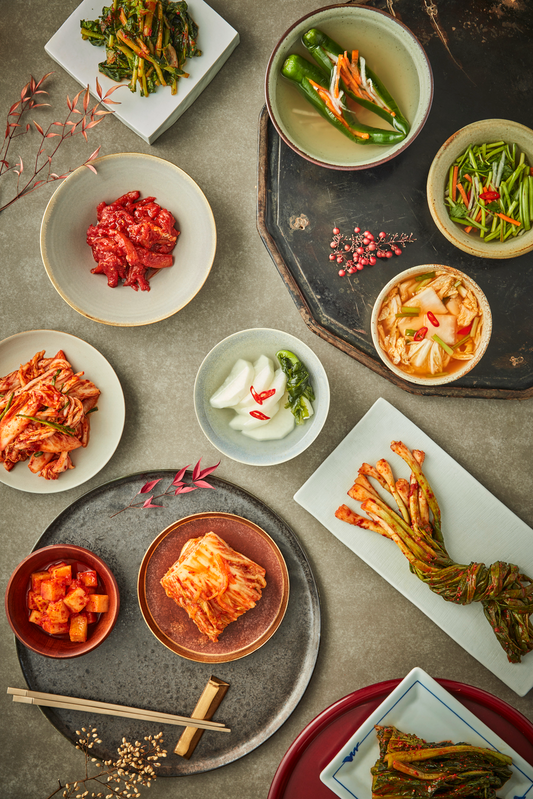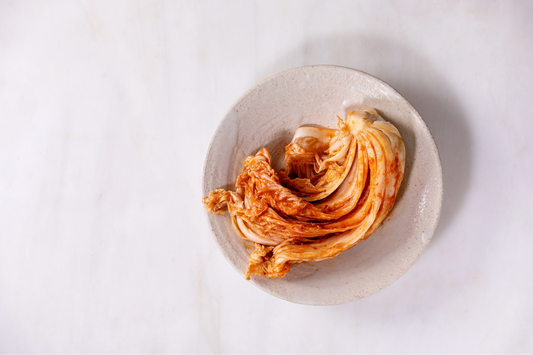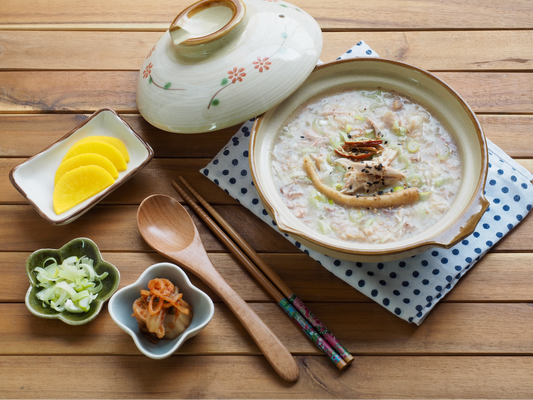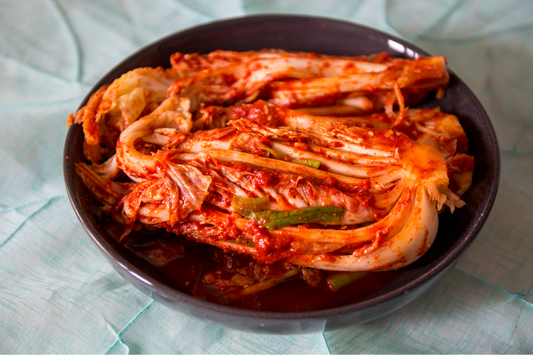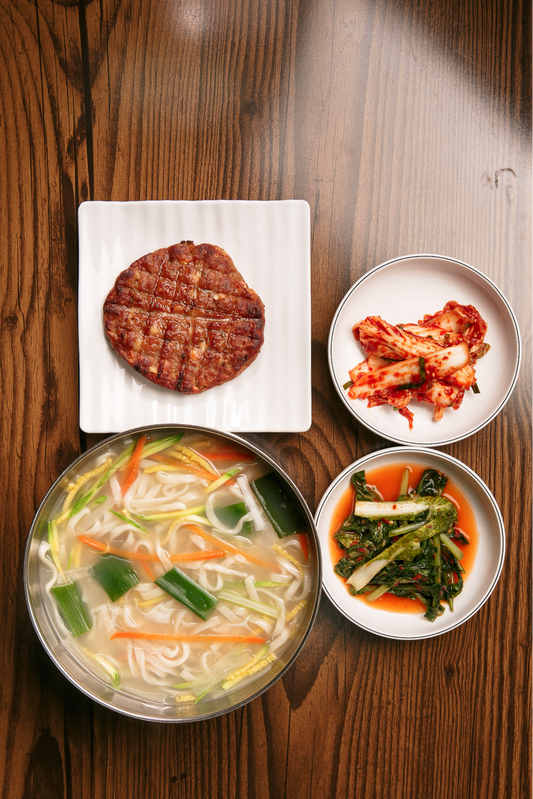Ever wondered how storing kimchi the right way can keep its taste amazing? Knowing how to store kimchi isn't just about making it last longer. It's also about keeping its flavor great, so every bite tastes like traditional Korean fermented foods. If you love kimchi or just want to learn, understanding how to store it is key for the best taste and texture.
In Korea, where fermentation is an art, factory kimchi is kept cool at 4 degrees Celsius. This is similar to our home fridges. It's a well-tested way to keep the kimchi's quality and taste. But keeping it cool is just part of the story. There's science, tradition, and best practices behind making sure kimchi not only lasts but also tastes great.
The adventure of enhancing kimchi's flavor spans from Korea's bright kitchens to Maangchi's modern recipes. Choosing to skip or add certain ingredients like salted squid is about finding the right balance in the recipe. After making your kimchi, it needs a special spot in your kitchen to mature perfectly.
Kimchi's versatility means storing it well is both important and an art. Whether it's for a family meal or a fusion dish, how well it's stored affects its flavor. Want to know how to make your fridge the perfect place for kimchi's flavors? Keep reading to learn about the careful balance between storing kimchi and enjoying its taste.
Key Takeaways
- Keeping kimchi submerged in pickling liquid is essential for enhancing its fermentation.
- Fresh, high-quality ingredients are crucial for the best kimchi flavor preservation.
- The ideal kimchi storage temperature mirrors that of our home refrigerators (4°C).
- Proper storage techniques can extend kimchi's shelf life, with certain varieties aging gracefully up to 2-3 years.
- Variations in recipes, such as Maangchi's, showcase the customizable and adaptable nature of kimchi to personal tastes and dietary preferences.
- Fermentation is a dynamic process, making earlier consumption yield a different taste profile than kimchi enjoyed months later.
- Understanding the fermentation process is fundamental in preventing spoilage and conserving the traditional kimchi flavor experience.

How to Store Kimchi After Fermentation
Kimchi's unique flavors and health perks depend on its storage after fermentation. It's critical to handle it properly to keep its special taste. And to make sure it's safe to eat. Let's explore refrigerated storage and keeping it in a cool place.
Refrigerated Storage: Precautions for Storing Fermented Kimchi in the Refrigerator
For best quality, storing kimchi in the fridge needs care. Keep it between 0°C and 4°C. This slows fermentation and keeps it crisp. But don't overstuff your fridge. Too much inside can warm it up, speeding up fermentation and hurting the kimchi's quality.
Even in the cold, kimchi keeps fermenting and gets sourer. To deal with this, use it in cooked meals. Think stews or fried rice, where its sourness adds to the flavor.
Storage in a Cool Place: Precautions for Storing Kimchi in a Cool Place
Choosing a cool storage spot means the kimchi container should be nearly air-tight but still sealed to keep out germs. It also needs a way for gases to escape. This stops the container from possibly bursting. Kimchi containers with gas absorbers are great for longer life and controlling fermentation.
Make sure kimchi stays under its brine to prevent mold. Occasionally open the container to let out gas. Fresh kimchi, with less fermentation, needs extra care to prevent spoiling too fast.
Whether you're refrigerating kimchi or storing it in a cool spot, checking it regularly is key. Proper container care is essential for maintaining its taste, texture, and safety.

Kimchi Re-Fermentation
Knowing how kimchi re-fermentation works is vital. It helps keep the flavor of fermented kimchi vibrant and retains its health benefits. Over time, kimchi changes in flavor and texture, whether kept in a fridge or at room temperature.
Re-Fermentation Process: The Process of Kimchi Re-Fermenting During Storage
Kimchi keeps fermenting as it's stored. This process can make it taste better or worse. If left at room temperature, kimchi turns sour quickly. The lactic acid bacteria break down sugars in the veggies. This sourness works well for some Korean stews but watch out! Too much fermentation can spoil the texture, making it too sour and soft.
Effects of Re-Fermentation: The Impact of Re-Fermentation on Kimchi’s Flavor and Texture
To handle kimchi's re-fermentation well, control its storage conditions. Keeping it cool slows down souring and keeps it crunchy. As it ferments slowly, the flavors blend nicely, making the kimchi more complex as it ages. Try your kimchi now and then. This way, you’ll know when it's just right.
In the end, managing kimchi’s re-fermentation is about balance. It's finding the right mix of time, temperature, and taste. Whether you want it mild or very sour, keep an eye on the fermentation. This is how you get perfect kimchi.

Checking the State of Fermentation
Perfecting kimchi means you must watch it closely and keep it fermenting just right. Whether you're new or have made kimchi before, it’s more than just looking at it. You need to touch, see, and taste it to make sure it becomes perfect without fermenting too much.
How to Check the Fermentation State of Kimchi: Methods and Precautions for Checking the Fermentation State
Start by using your senses to check the kimchi. At first, it should look bright and feel crisp. Over time, kimchi's smell, taste, and feel will change. It goes from smelling fresh and spicy to having a tangy scent. That's the work of good bacteria. The magic number for acidity is about 4.2. This level is perfect for taste and safety.
Maintaining Proper Fermentation: How to Ensure Kimchi Is Properly Fermenting
For the best fermentation, temperature matters a lot. Keep kimchi at room temperature, around 18°C to 22°C, for the first couple of days. Then move it somewhere cooler. This helps develop great flavor without getting too sour or fizzy, which means it's overdone. Also, store kimchi in airtight containers with its juice to keep air out. This keeps it from getting contaminated and spoiling the taste.
The texture and flavor of your kimchi show how well it’s fermented. By watching the fermentation conditions closely, you make sure your kimchi turns out wonderfully. It’ll be a tasty part of many meals.

Suggested Additional Sections
Storing kimchi is an art. It requires more than just putting it in the fridge. It mixes taste, fermentation, and preservation. To keep its taste and quality, we must be precise. Experts suggest storing it for weeks or even 3-6 months. This depends on the ingredients and how mature you want the flavor to be. With over 200 types of kimchi, each with unique recipes, storing it correctly becomes challenging.
Ideal Storage Duration for Kimchi: Recommended Timeframes for Storing Kimchi to Maintain Optimal Taste and Quality
The best time to enjoy kimchi can differ greatly. Some families have "pure" recipes that impact how long it can be stored. Others might add special ingredients or adjust sugar, which changes how long it lasts. For instance, Napa Cabbage Kimchi lasts differently than kimchi made with radish or cucumber.
Environmental Factors Affecting Kimchi Storage: Detailed Insights into How Temperature, Humidity
Temperature and humidity are key in kimchi fermentation. Storing kimchi in a cool, stable place with controlled humidity is best. This stops it from fermenting too fast. Whether it's fresh Geot-Jeori or water kimchi for later, managing the environment is crucial for its taste.
Common Mistakes in Kimchi Storage and How to Avoid Them: Tips to Prevent Kimchi From Over-Fermenting or Losing Flavor
Storing kimchi right is essential for its taste and texture. Not sealing it properly can ruin its flavor. Vegan kimchi lovers must pick ingredients carefully to keep the quality without sacrificing taste. Tasting it often and keeping it in a clean place helps avoid mistakes. Following recipes from books like "Koreatown" or choosing top ingredients ensures kimchi stays delicious.
FAQ
How should kimchi be stored to preserve its flavor?
Kimchi keeps its best taste in sterile, airtight containers. This reduces its contact with air. Always use clean spoons and keep the kimchi dipped in its brine. Store it in the fridge, ideally from 32°F to 39°F. This helps keep the flavor and texture right. Try to eat it within 3 to 6 months for the freshest taste.
What precautions should be taken when storing fermented kimchi in the refrigerator?
Kimchi needs to be in a sealed container in the fridge to avoid spoilage. Be careful not to stuff your fridge too much. This can make temperature go up and down. Every so often, let gas out of the container to keep the kimchi nice. Remember to drown the kimchi in its brine after you use it, to keep it longer.
Are there special considerations for storing kimchi in a cool place not in the fridge?
Yes, storing kimchi outside the fridge is a bit different. Make sure its container is sealed well but can still let gas out to stop it from bursting. Also, keep it somewhere consistently cool to avoid it fermenting too much.
How does the re-fermentation process affect kimchi during storage?
Re-fermentation makes kimchi taste sourer and more complex. This slow change in the fridge can be good, especially for cooking. Yet, too much re-fermentation makes kimchi too sour and soft.
What impact does re-fermentation have on kimchi's flavor and texture?
As kimchi re-ferments, it gets a deeper, tangier taste. The texture becomes softer. Some like this strong flavor for particular recipes. But, others might miss the crunch of fresher kimchi. Check how it tastes now and then to find its best fermenting point for you.
How can one check the fermentation state of kimchi?
You can tell how kimchi is fermenting by looking, smelling, and tasting it. It should be colorful, smell tangy, and feel crisp. Taste it as well, because the perfect ferment time varies. Kimchi is usually best at a pH of about 4.2. Checking it yourself is key.
What are the best practices for ensuring kimchi is properly fermenting?
Start by letting your kimchi ferment outside the fridge for 1 or 2 days. This helps good bacteria grow. Avoid big temperature changes and keep things clean to stop contamination. Try some kimchi often to see how it's fermenting.
What is the ideal storage duration for kimchi to maintain its optimal taste and quality?
The best time to store kimchi is between a few weeks and 3 to 6 months. Its flavors develop well without getting too sour. If stored properly, it can last even longer and still be safe to eat.
How do environmental factors like temperature and humidity affect kimchi storage?
Temperature and humidity really affect how kimchi ferments. Cool, stable temperatures are best for slowing fermentation, keeping kimchi good. Controlling moisture stops it from spoiling or fermenting too much. Big changes in these can mess up the taste and texture.
What are some common mistakes in kimchi storage, and how can they be avoided?
Not sealing containers well, not keeping a steady temperature, and not tasting often are mistakes. These can make kimchi ferment too much or spoil. To avoid these, prepare with the right amount of salt, seal containers the right way, keep storage clean, and check the taste and texture regularly.

